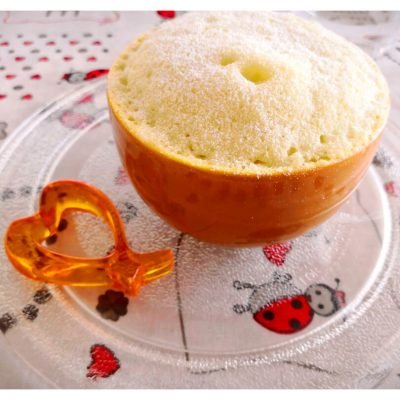Ingredients
-
400 gr Maida Flour
-
700 gr Sugar
-
20 gr Rice Flour
-
1 gr Yeast powder for sweets
-
40 ml Light Yogurt
-
300 ml Hot Water
-
2 gr Saffron
-
600 ml Water
-
2 gr Cardamom Powder
-
20 ml Rose Water
-
To Fry
-
Vegetable Oil
Directions
The Jalebi is a typical dessert of the Indian Subcontinent and is usually served during important celebrations such as the Republic Day and Independence Day.
Jalebi are Indian pancakes. They are very sweet thanks to the sugar syrup and rose water that they cover once they are cooked. They can be eaten hot and can be eaten alone or drenched in hot milk or served with Indian tea with spiced milk. They are prepared for special occasions such as ceremonies and parties even if they are at the same time an appreciated “street food”. Very important in their preparation is the attention paid to frying, which must be impeccable. The jalebi are characterized by an orange color, given, in the recipe that we are going to discover, from saffron, which can be replaced by food coloring. Here’s how to prepare the jalebi with the original recipe of Indian cuisine found here.
Steps
|
1
Done
120
|
Start the preparation by mixing the yogurt, flour, baking powder and rice flour in a ceramic bowl with 180 ml of water. |
|
2
Done
|
At this point, start preparing the syrup by dissolving the sugar in the water along with cardamom and saffron. |
|
3
Done
|
Take a Kadhai that is a round-bottomed pot, pour the mixture evenly inside to form spirals (we advise you to make a few at a time). |
|
4
Done
|
Now start frying the spirals until they become golden and crunchy, dip them in the syrup for about 6 minutes and serve. |

 English
English Afrikaans
Afrikaans Shqip
Shqip አማርኛ
አማርኛ العربية
العربية Հայերեն
Հայերեն azərbaycan dili
azərbaycan dili Euskara
Euskara башҡорт теле
башҡорт теле Беларуская
Беларуская বাংলা
বাংলা bosanski jezik
bosanski jezik Български
Български မြန်မာစာ
မြန်မာစာ Català
Català 粤语
粤语 Binisaya
Binisaya Chinyanja
Chinyanja 中文(简体)
中文(简体) 中文(漢字)
中文(漢字) Corsu
Corsu Hrvatski
Hrvatski Čeština
Čeština Dansk
Dansk Nederlands
Nederlands Esperanto
Esperanto Eesti keel
Eesti keel vosa Vakaviti
vosa Vakaviti Suomi
Suomi Galego
Galego ქართული
ქართული Deutsch
Deutsch Ελληνικά
Ελληνικά ગુજરાતી
ગુજરાતી Kreyòl ayisyen
Kreyòl ayisyen Harshen Hausa
Harshen Hausa ʻŌlelo Hawaiʻi
ʻŌlelo Hawaiʻi Hmoob
Hmoob עברית
עברית Мары йӹлмӹ
Мары йӹлмӹ Magyar
Magyar Íslenska
Íslenska Bahasa Indonesia
Bahasa Indonesia Gaeilge
Gaeilge Italiano
Italiano 日本語
日本語 Қазақ тілі
Қазақ тілі ភាសាខ្មែរ
ភាសាខ្មែរ кыргыз тили
кыргыз тили 한국어
한국어 Kurdî
Kurdî Latīna
Latīna Latviešu valoda
Latviešu valoda Lietuvių kalba
Lietuvių kalba Lëtzebuergesch
Lëtzebuergesch македонски јазик
македонски јазик Malagasy fiteny
Malagasy fiteny Bahasa Melayu
Bahasa Melayu Malti
Malti Te Reo Māori
Te Reo Māori Монгол
Монгол नेपाली
नेपाली Norsk
Norsk Querétaro Otomi
Querétaro Otomi Papiamentu
Papiamentu پارسی
پارسی Polski
Polski Português
Português ਪੰਜਾਬੀ
ਪੰਜਾਬੀ Română
Română gagana fa'a Samoa
gagana fa'a Samoa Gàidhlig
Gàidhlig Cрпски језик
Cрпски језик Sesotho
Sesotho chiShona
chiShona සිංහල
සිංහල Slovenčina
Slovenčina Slovenščina
Slovenščina Af-Soomaali
Af-Soomaali Español
Español Kiswahili
Kiswahili Svenska
Svenska Reo Mā`ohi'
Reo Mā`ohi' Тоҷикӣ
Тоҷикӣ татарча
татарча ภาษาไทย
ภาษาไทย faka Tonga
faka Tonga Українська
Українська Oʻzbek tili
Oʻzbek tili Tiếng Việt
Tiếng Việt Cymraeg
Cymraeg ייִדיש
ייִדיש











